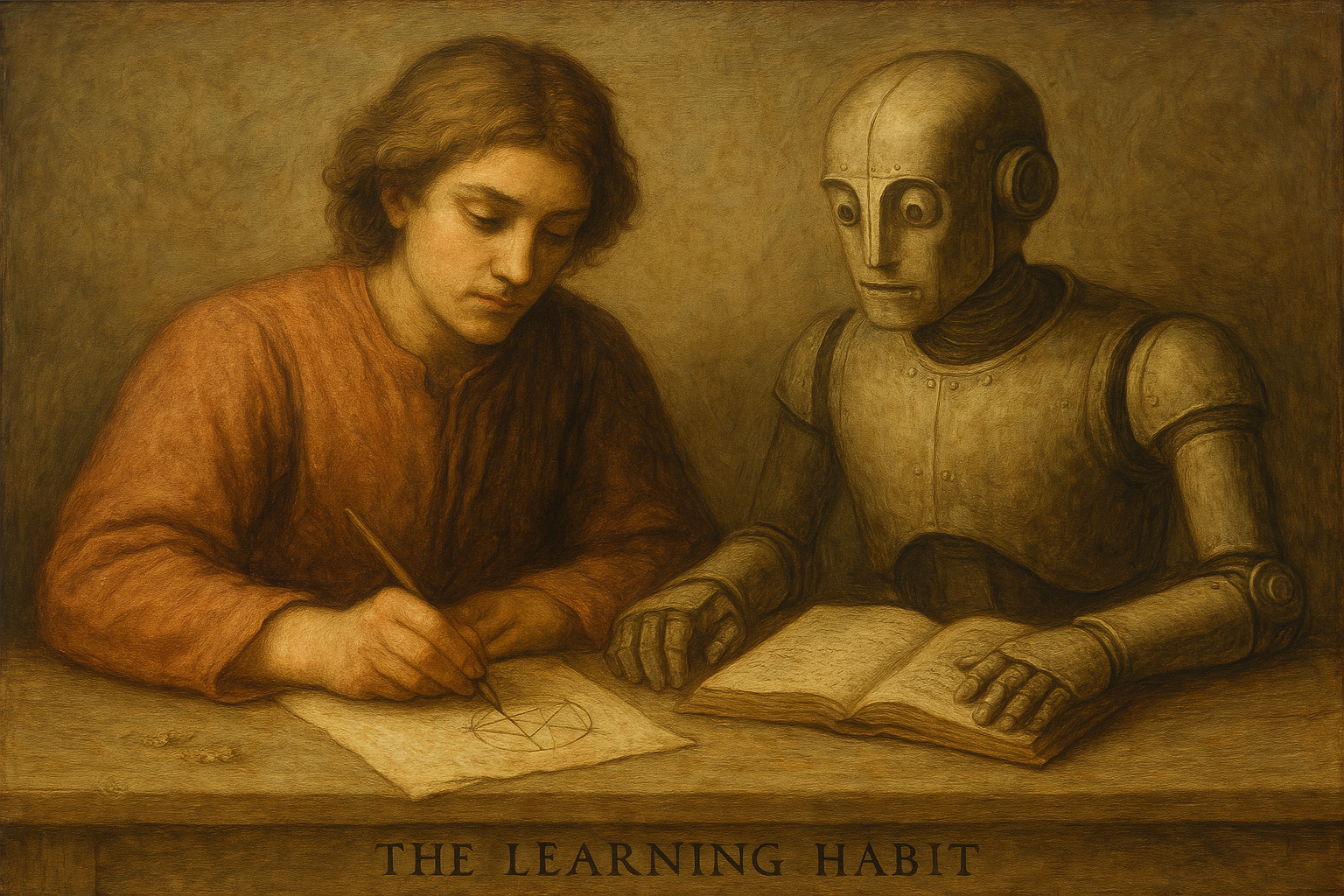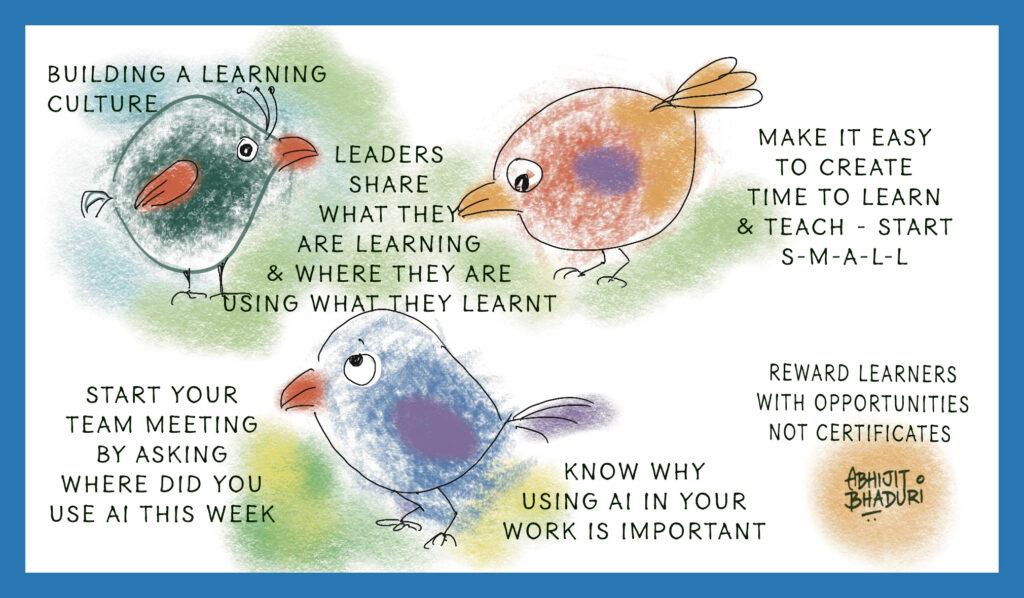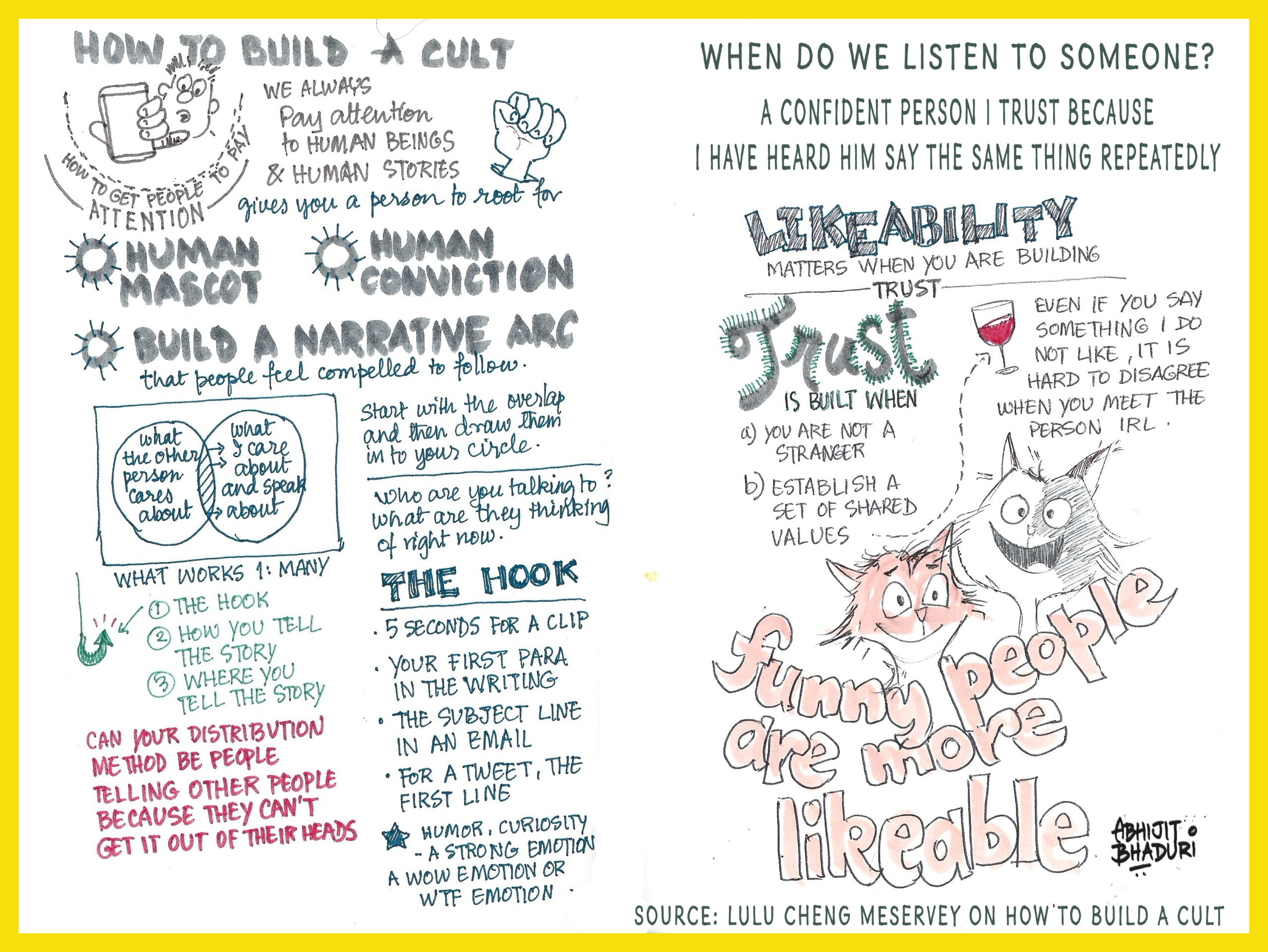
Problem: Organizations struggle to keep pace with rapid AI advancements. AI is really Chaotic Technology and upskilling for this needs to done differently – think play, not work.
Hallmarks of a great learning culture for generative AI?
Problem: Organizations struggle with keeping up with the rapid evolution of AI.
Solution: A great learning culture treats learning as a habit, not an event. What needs to happen:
- Embedded in work – Learning should be part of daily workflows, not a separate activity. Example: Google’s “20% time” policy allowed employees to dedicate time to learning and innovation, leading to products like Gmail.
- AI-assisted – Use GenAI for personalized learning paths and just-in-time support. Example: Duolingo’s AI-driven personalized learning adapts to user pace and learning style.
- Leadership-led – When leaders learn publicly, it signals that learning is expected. Example: Satya Nadella’s “Learn-It-All” mindset transformed Microsoft’s culture.
- Experimentation-friendly – Encourage hands-on projects, hackathons, and safe spaces for failure. Example: Amazon’s “Day 1” culture encourages employees to experiment with AI tools and fail fast.

Problem: Leaders don’t know where to start measuring learning readiness.
Solution: Use a 3-question pulse check:
- Do employees know why AI matters for their role?
- Do employees know why AI matters for their role?
- Are they applying AI learning to real business problems?
📌 Pfizer’s AI Readiness Audit helped identify learning gaps before rolling out AI-driven drug discovery tools.
How do you make learning a daily habit?
Problem: Employees don’t prioritize learning because of work pressure.
Solution: Make learning easy and friction free
• Dedicate 1% of work time (24 minutes a week) to structured learning.
- AI-powered nudges: Use chatbots to send “learning nudges” relevant to daily tasks.
• Encourage managers to start meetings with a “What AI tool helped you this week?” discussion.
📌 Accenture’s AI Learning Nudges – Employees receive weekly AI use-case examples based on their job role. Walmart’s AI Upskilling Program tailors AI education based on employees’ career stage and function.
Role of the Leaders
Problem: Employees won’t prioritize learning if leadership doesn’t.
Solution: Leaders must learn visibly. Use the Work Out Loud to share your process of learning in real time.
• CEOs and managers should share their own AI learning journeys in town halls.
• Reverse mentoring: Leaders pair with younger employees to learn new AI tools.
📌 Example: Goldman Sachs’ Reverse Mentoring for AI – Senior executives are paired with junior AI specialists to understand AI’s impact firsthand.

I spoke at the @DataCamp podcast


